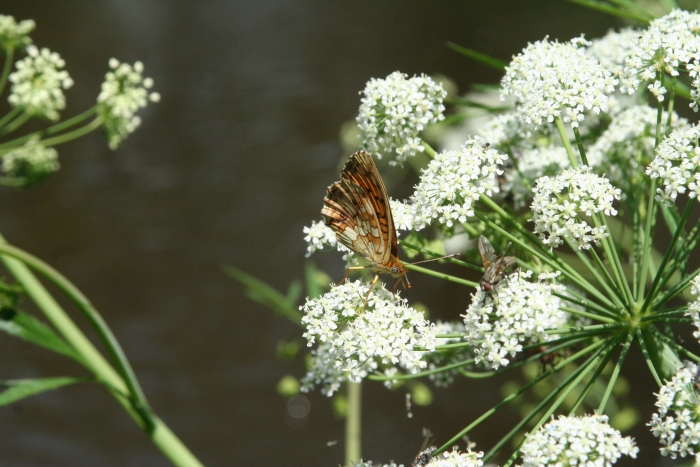Cowbane
(Cicuta virosa)
Cowbane (Cicuta virosa)
/
/

Oleg Kosterin
CC BY 4.0
Image By:
Oleg Kosterin
Recorded By:
Copyright:
CC BY 4.0
Copyright Notice:
Photo by: Oleg Kosterin | License Type: CC BY 4.0 | License URL: http://creativecommons.org/licenses/by/4.0/ | Rights Holder: Oleg Kosterin | Publisher: iNaturalist | Date Created: 2017-06-30T12:31:30-07:00 |

























Estimated Native Range
Summary
Cicuta virosa, commonly known as cowbane or northern water hemlock, is a highly poisonous perennial herb that is native to wetland areas such as marshes, riverbanks, and ditches across northern and central Europe, northern Asia, and northwestern North America. It typically grows to a height of 3-7 feet tall and features smooth, hollow stems that are characteristically purple-striped. The plant bears small, white flowers arranged in umbrella-shaped clusters known as inflorescences, which bloom in the summer and are moderately showy. The leaves are large and pinnately compound with serrated leaflets.
Cowbane is not commonly cultivated due to its toxicity, which poses a risk to humans and livestock. However, its natural habitat makes it a potential plant for naturalistic water garden settings or riparian restoration projects, provided it is managed carefully. In cultivation, it requires consistently moist or wet soil and can grow in full sun to part shade. It is not drought-tolerant and prefers cool climates. Due to its invasive potential, it should not be planted where it can spread into natural waterways or wetlands outside its native range. Gardeners should handle this plant with extreme caution, as all parts contain cicutoxin, a potent toxin that affects the central nervous system.CC BY-SA 4.0
Cowbane is not commonly cultivated due to its toxicity, which poses a risk to humans and livestock. However, its natural habitat makes it a potential plant for naturalistic water garden settings or riparian restoration projects, provided it is managed carefully. In cultivation, it requires consistently moist or wet soil and can grow in full sun to part shade. It is not drought-tolerant and prefers cool climates. Due to its invasive potential, it should not be planted where it can spread into natural waterways or wetlands outside its native range. Gardeners should handle this plant with extreme caution, as all parts contain cicutoxin, a potent toxin that affects the central nervous system.CC BY-SA 4.0
Plant Description
- Plant Type: Herb
- Height: 1-2.75 feet
- Width: 2.5-4.25 feet
- Growth Rate: Slow, Moderate
- Flower Color: White
- Flowering Season: Summer
- Leaf Retention: Deciduous
Growth Requirements
- Sun: Full Sun
- Water: High
- Drainage: Standing, Slow
Common Uses
Border Plant, Water Garden
Natural Habitat
Wetland areas such as marshes, riverbanks, and ditches
Other Names
Common Names: Cowbane, Poison Parsnip, Mackenzie’s Water Hemlock, Northern Water Hemlock
Scientific Names: , Cicuta virosa, Cicuta angustifolia, Cicuta angustifolia, Cicuta baldacciana, Cicuta baldacciana, Cicuta cellulosa, Cicuta cellulosa, Cicuta mackenzieana, Cicuta nipponica
GBIF Accepted Name: